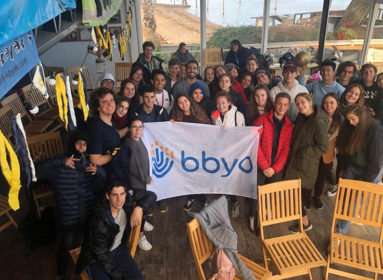
By Rabbi Tzvi Hersh Weinreb
T
his week, we will begin our march toward Passover. For it is on this Shabbat that we begin the book of Shemot, the story of the Exodus. And henceforth, for many weeks, every weekly Torah portion deals with the drama of our servitude and our redemption, with the heroes of the Exodus and with its villains.
Each parsha provides us with an opportunity to prepare ourselves, intellectually and spiritually, for the holiday that lies ahead. Among the many preparations, we are called upon to conduct a challenging preparation which is often overlooked. I refer to the passage in the haggadah which originates in the Mishnah and which reads: “In each and every generation, a person is obligated to see himself as if he personally left Egypt, as it is written, “and you shall explain to your son on that day, ‘It is because of what the Lord did for me when I went free from Egypt.’” (Exodus 13:8).
Note the phrase “for me when I went free.” We are called upon to personally visualize ourselves as having experienced the Exodus in all of its detail.
For me, this is the greatest challenge of the entire Passover experience: picturing myself as a helpless slave, then personally witnessing a series of wondrous miracles; living through the original Passover experience, hurriedly gulping down that first Passover festive meal; feeling the burst of sudden freedom and marching as a free man into an unknown wilderness. Can I possibly relive the powerful emotions that my ancestors felt millennia ago?
It is in response to such questions that I suggest a careful reading of all the Torah portions that we will encounter, beginning this Shabbat and continuing for many weeks. We begin with a teaching of the commentator Rabbi Moshe ben Nachman, Ramban or Nachmanides. He provides a brief introduction to the entire book of Shemot, commonly called the Book of Exodus. But the very point of his introduction is to reject the common title of this second book of the Bible. Instead, he insists that the book be known as the “Book of Redemption,” Sefer HaGeulah. Why?
Ramban considers the second book of the Torah to be the sequel to the first book, which iscommonly referred to as the book of Genesis. For Ramban, Genesis is primarily a book about the Patriarchs Abraham, Isaac, and Jacob. It is less a book about the creation of the universe than it is a book about the creation of the people of Israel. Its theme is “the status of our forefathers,” by which he means the ethical and moral stature of our first ancestors.
With the descent of our people into Egypt, exile, and slavery, there is a loss of “the status of our forefathers,” a diminution of their ethical and moral stature. Redemption is the process by which we regain that status, that ethical and moral stature. Redemption is not the Exodus from Egyptian bondage. Rather, it involves the revelation at Sinai, the construction of the Tabernacle, and, ideally and ultimately, the return to the Land of Israel. Redemption is the reclaiming of the ethical and moral stature of our patriarchs.
Following this approach, the requirement of “seeing ourselves as if we personally left Egypt” is less about imagining ourselves as slaves or as marching out of Egypt as free men. It is about the implications of freedom for our reclamation of the ethical and moral stature of our forefathers.
Ramban offers us a profound insight: a slave, a person in bondage, is not free to act ethically and morally. This is certainly true of a person who is literally enslaved. But it is also true of one whose choices in life are dictated by political propaganda, cultural influence, pressures to conform blindly, and other forces with which we are all very familiar nowadays.
Ramban’s 13th century concept of “the status of our forefathers” is explained beautifully in the 19th century commentary of Rabbi Naftali Tzvi Yehudah Berlin, known as the Netziv, in his introductory remarks to the book of Genesis. For the Netziv, the defining quality of our Patriarchs was the characteristic of yashrut, which he defines as an ethic that transcends piety and saintliness and extends to the ability to relate to people very different from oneself, working together with others in a harmonious and constructive fashion.
We now know of one way that we can “see ourselves as if we have left Egypt.” To do so, we must each come to grips with what it means for us to experience redemption. Following Ramban and Netziv, our charge is to reclaim what the former calls the “status of our forefathers” and what the latter terms the ability to act yashar. We must improve our ethical conduct, our interpersonal relationships, by cooperating with others in our surroundings and especially with those who are different from us. Abraham, Isaac, and Jacob were yesharim, and it is by emulating their “status” that we “leave Egypt,” depart bondage, and experience redemption.








 Southern New England Jewish Ledger
Southern New England Jewish Ledger









